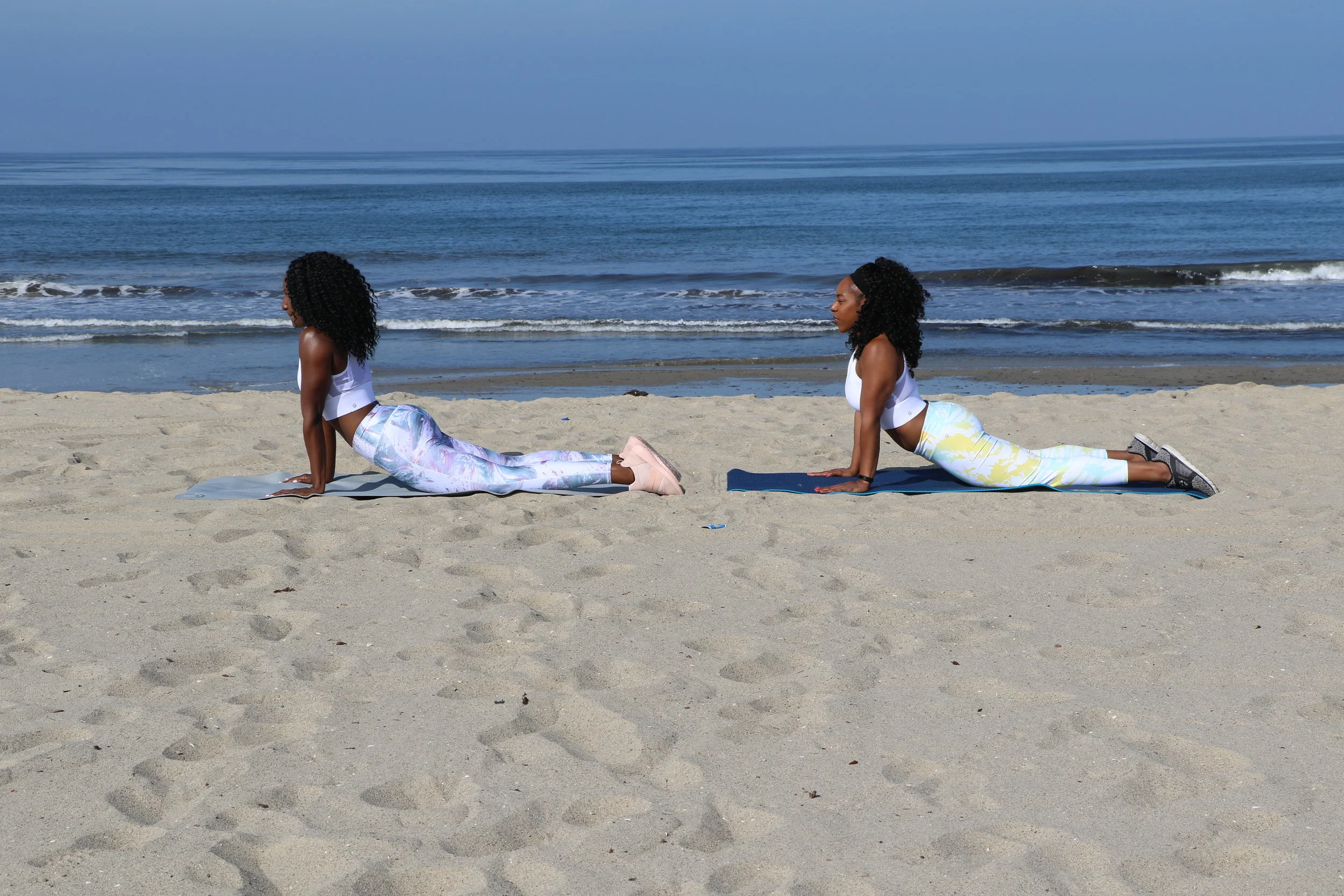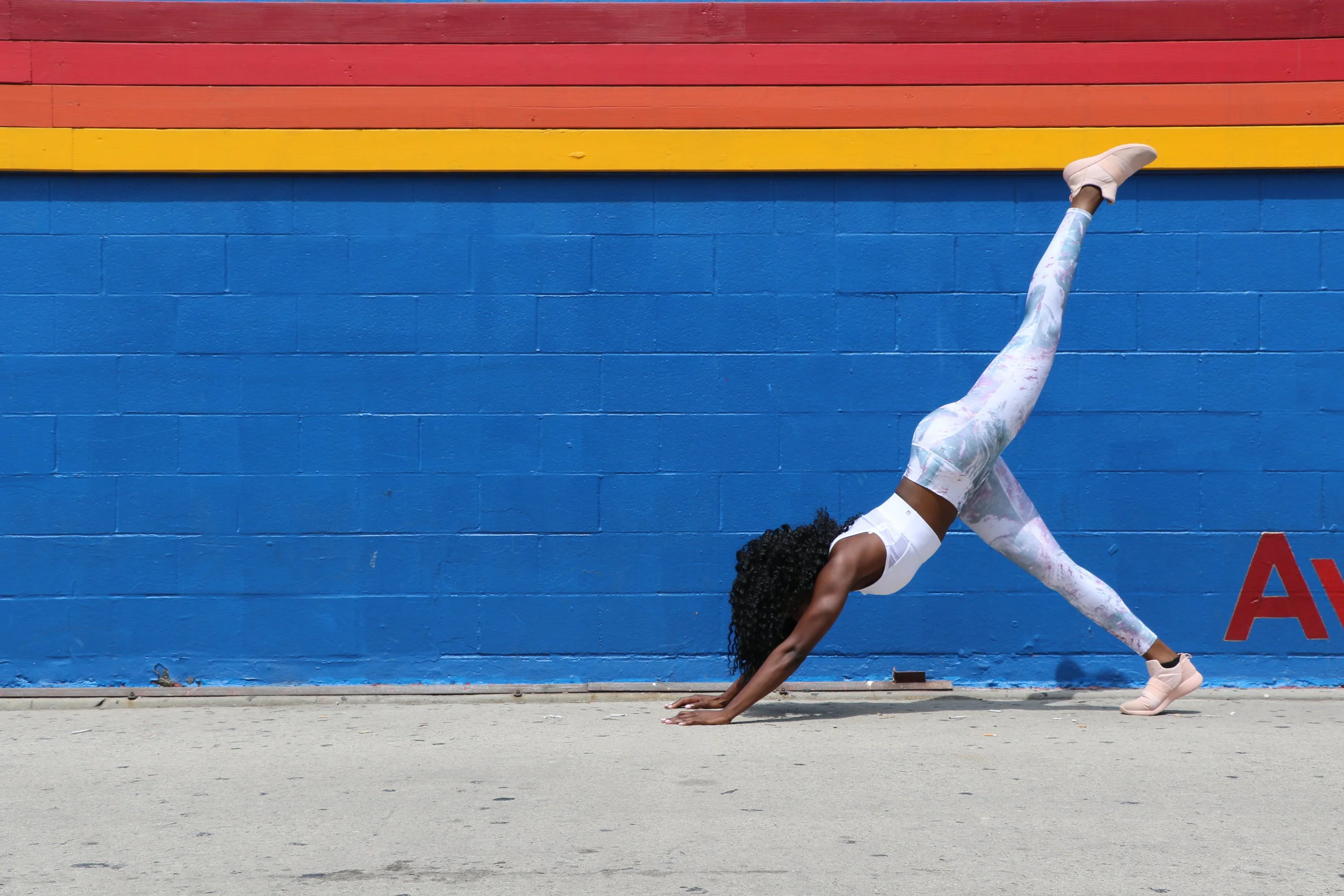Breathe. Stretch. Shake. Let it Go.
Feeling sore.
Might stretch later. IDK.
We bet this caption sounds more accurate than any of us would like to admit, right? You hear, “Time to cool down,” and you head for the door with half the class to get a five minute head start on whatever is next for your day. Whether your preference is a long run, lifting heavy or lengthening those muscles at the barre, there is never a good reason to skip that stretch.
Stretching helps decrease muscle soreness, increases flexibility and blood flow, improves range of motion in your joints and aids in recovery following exercise. And that is just the beginning.
Importance of Stretching
Did you know stretching has extended benefits like helping decrease stress. Regular stretching helps reduce mental tension, and when combined with breathing techniques, it may also help decrease anxiety and depression. Static stretching and mind-body disciplines like yoga can help reduce blood pressure and heart rate. Dynamic stretching, active movements where the joint and muscles are stretched through a full range of motion, can also help with performance and enhance agility, power and speed.
What type of stretching should you be doing?
We’ve already mentioned static and dynamic stretching above, but what are they and when should you use them? Static stretching involves holding your muscle in a position where you feel slight discomfort, but not pain. You want to hold each position for 15 to 30 seconds and perform it three to five times. A few examples include straddle stretch, standing quadriceps stretch, runners lunge or seated forward bend.
Dynamic stretching is typically used more by athletes, but that doesn’t mean there isn’t a use for it in your routine. If you are like to go hard during workouts or tend to focus on CrossFit and HIIT training, you should be including dynamic movements in your stretch routine. Also, if you are training for events like a Spartan Race or Tough Mudder, dynamic stretching can help with your speed and agility. Instead of holding your movements for a period of time, dynamic stretching requires repeated movement of your joints and muscles through a full range of motion. Some dynamic stretches include walking lunges, leg swings, high or Frankenstein kicks, inchworms or adding an upper body twist to moves like a runner lunge by planting your palm on the ground and twisting toward the knee that is in the forward position.
Does timing matter?
We should all set a goal to stretch perform a full stretch routine at least two days a week or more if you are training for a sporting event. This is especially important for those of us who sit at a desk all day. Stretching helps to counteract the bad posture and strain we put on certain muscles (like neck muscles or our hips) while staring at our screens. What is important to remember is that you want to avoid static stretching when your muscles are cold, so dynamic stretching, jogging, jumping jacks and jump ropes are a better pre-workout warm-up. Aim for at least five minutes or longer of static stretching post workout.
One more thing.
We have been loving the focus on mobility movements across the fitness industry recently. Mobility movements are designed to help you work better and focuses on increasing performance. Mobility movement takes stretching one step further by focusing on muscles, ligaments, tendons and the joints (sliding surfaces). For a great example of a mobility routine you can incorporate now, check out this article on Shape.com. (We also have to say, we love that it features a little Black Girl Magic + Yogi Alicia Archer a.ka. @kinkysweat, who knows….this may be an extended #FitGirlMagic feature for another day.)


